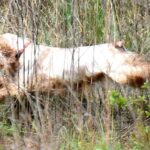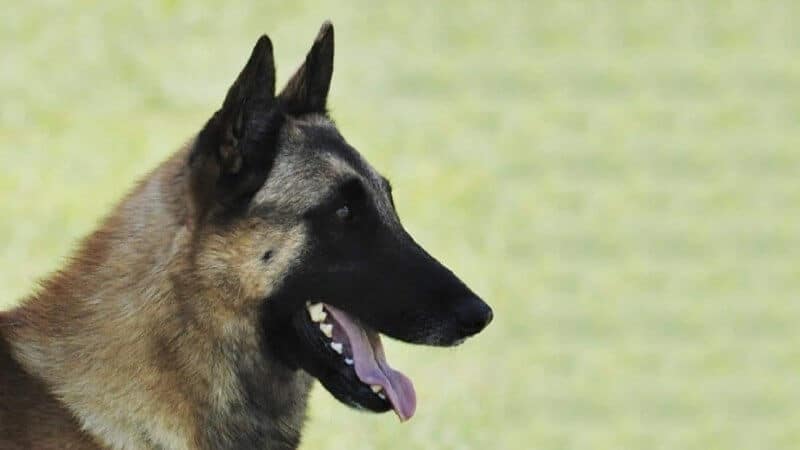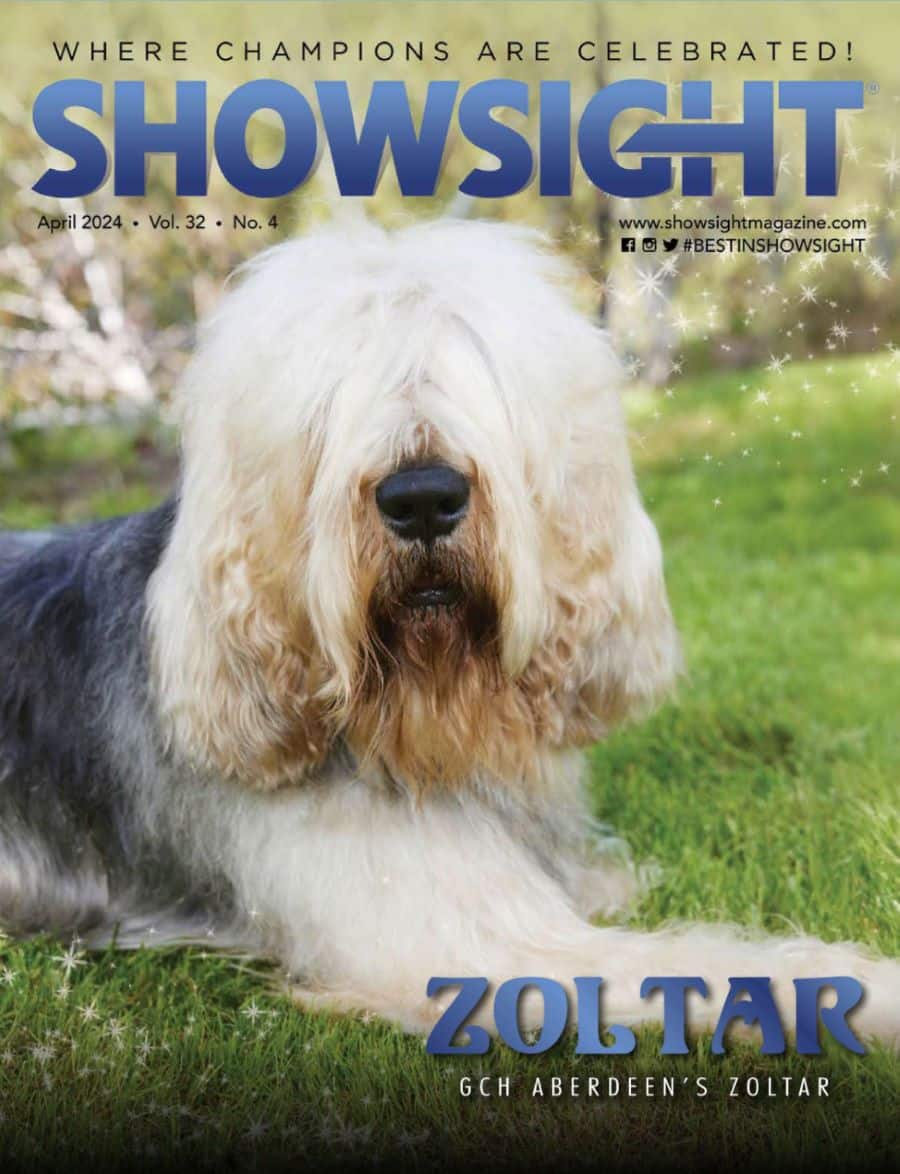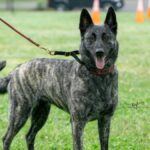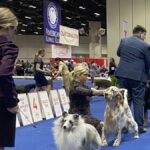Judging the Belgian Malinois – Confident, Smart, Hardworking
It is my sincere desire that those judging the Belgian Malinois attempt to know the breed beyond its standard; an understanding of the history and purpose of the breed will give a judge more confidence in making the correct selections. The Belgian Malinois is unquestionably a sheep herding breed, and a very good one, but it should be understood that historically the breed was put to work in a variety of ways that required its structure and temperament to be sound.
This breed was used not only for herding, but as a guardian of home and farm, as a police dog, a guide dog and a valued family companion. Today, Malinois will be found in every performance venue, excelling not only in herding, but in agility, tracking and obedience as well. Beyond the show ring and performance venues, the Malinois has become well known as the dog of choice with the military and many police and security departments. The Belgian Malinois is bred for intelligence and sensibility, ease of movement, and strength without bulkiness. He is always alert to his surroundings and attentive to his master.
The standard begins with “The Belgian Malinois is a well balanced, square dog, elegant in appearance with an exceedingly proud carriage of the head and neck.” Please keep these key words in mind as you begin your judging experience—Balanced—Square—Elegant—Proud. As I check in the entries, I prefer to have the entries gait around the ring to their standing/starting location without my watching movement. Most Belgian Malinois are owner-handled, and this allows both dogs and owners a few moments to feel at ease. I observe the entry from across the ring to appreciate that “first impression”—elegant, square silhouette, medium size, with the distinctive proud carriage of head and neck showing alertness and devotion to master. The group is then moved to gather a similar impression, but this time as a herding dog; movement that is graceful and seemingly effortless.
Keeping the breed’s purpose in mind, as well as those first impressions, we are ready to begin the individual exams. I prefer to again view the silhouette of the dog, looking for a square body that shows good balance and notable elegance. They should be distinctly Belgian in silhouette; the length, measured from the point of breastbone to the point of rump, should equal the height. Bitches may be slightly longer—this is slightly longer in loin—we do still want them to appear square.
Their legs are as long as their depth of body—shoulder to elbow equals elbow to ground. The breed standard does have size disqualifications; the ideal height is 24-26″ for males and 22-24″ for females—but no preference is given to variations within those limits. Dogs that are under 23″ or over 27″ and females that are under 21 inches and over 25 inches are to be disqualified. While all four Belgian standards have the same ideal size, they all vary as to the height for disqualification. I still remind myself of these numbers before judging.
The overall balance of the individual dog is of greater importance than size to me—but the dog should be “medium” in substance. I look for a dog with a topline that is level and straight, the withers slightly accentuated, and the croup moderately long—a smooth flow from top of neck to tip of tail. Our dogs are typically free-stacked, so they may not hold a pose for long!
When approaching the Malinois, please do it with confidence and conviction. Remember that the dog will be very focused on their handler, so any hesitation on the judge’s part in the approach may put the dog on alert. I prefer to greet the dog or handler as I walk up for the exam. Its natural protective instincts make it a breed which may appear reserved toward strangers, this is normal. It should be confident though on your approach, never fearful, and showing good manners.
The standard says, “The dog may be reserved with strangers, but is affectionate with his own people.” By nature the Malinois is an active dog and likes to move about. They also have a wonderful sense of play, and it does not take much encouragement for them to exhibit their humorous side. Never accept poor temperament, excusing a dog that is having a bad day is okay.
The Belgian Malinois is not a head breed, but a correct head is a thing of beauty and is important to define the breed. The head should be in proportion to the rest of the body, well-chiseled with no looseness of skin. The head is long, but without exaggeration, strong, but not appearing heavy.
The length is equal from nose to stop and stop to occiput—the skull should not be wider than its length. The planes of the head are parallel and the topskull flat. Look for a head that is balanced and a slight wedge. Commonly seen head faults include a too short muzzle, a rounded topskull, cheekiness, or head planes that are not parallel. The eyes should be almond shaped and a dark brown, with an alert, intelligent and kind look. Round or light colored eyes can destroy the look of a good head and would be faulted. Their ears are high set and not large, an equilateral triangle in shape and moderately cupped. The ears should be firm and not soft even when the dog is moving, although they can fold them back against their heads. Ears hanging as on a hound or semi-prick ears are a disqualification.
Correct eyes and ears are essential to good breed type. When combined with proper head structure, the Malinois head should never be confused with that of a German Shepherd, a Collie or an Elkhound. The Belgian Malinois is to have a black mask—that may be simply a black muzzle and black ears or a nearly black head. My preference is a mask that extends beyond the eyes, but color is a finishing point to me. A black mask is rarely solid black, there will be a combination of dark brown and even fawn hairs, but the overall appearance is to be a blackened mask. There is often what we refer to as “frosting” on the chin—white hairs—this is acceptable and normal, some puppies are born with it. Pigment around the eyes and mouth, as well as the nose, should be black.
Expression in the Malinois includes the balance of head proportions, the earset, the eyes, the masking and ultimately, how they use it. When judging the Belgian Malinois, you will see the best expression when the owner-handler is allowed to bait their dog, rather than you attempting this. Remember the standard stating, “May be reserved with strangers, but affectionate with his own people.” If you notice a dog looking away from the handler into the crowd, chances are he has found his owner; they are vigilant in keeping an eye on those they know.
As a herding dog, the bite is of considerable importance; traditionally the bite most desired was a level pinching bite. As a breeder though, I am more comfortable using dogs that have a scissors bite. Either a scissors or level bite is acceptable. I prefer to have the mouth checked at the end of the exam. The owner should show you the front bite as well as lifting the lips on both sides so you may view for full dentition.
Although it is rare that a dog is missing teeth other than premolars, we do want judges to check for full dentition, but do not pry open their mouths—simply lifting the lips usually offers the necessary information. The standard reminds us, “An overshot or undershot bite is a fault. An undershot bite in which two or more of the upper incisors lose contact with two or more of the lower incisors is a disqualification. One or more missing teeth is a serious fault.” You may see short center incisors, which are not a disqualification in an otherwise correct bite.
I appreciate a beautiful neck, medium long and slightly arched. Proper neck arch is more evident when the dog is allowed to look forward naturally rather than up at its owner-handler. We do desire a well laid back shoulder, with the scapula and upper arm being of equal length. As a breeder, I realize it is hard to consistently produce dogs with correct angulation in a square silhouette, but it is the ideal and what we want. I like the dog to feel muscled, but never bulky. Correct feet thrill me nearly as much as a correct head! They should be cat-footed, not turned in or out, tight, and well padded. Good feet are what a herding dog works on.
The rear should balance the front—moderate, well muscled, but not over angulated or stilted. The hocks should be set rather low for efficient working ability and moderately bent. I want a level back that is straight with a short loin, flowing into the croup which slopes toward the tail. The last vertebra of the tail should reach the hock. A cropped or stump tail is a disqualification. This can be checked efficiently when running your hands over the back, then down the tail to the hock.
When standing at rest, the tail is dropped (never held by the handler). The tail is lifted when the dog is in motion, and ideally is a fluid line continuing from the back. I’m not fond of a tail carried gaily above the back, nor one that is tucked between the legs. It is not uncommon to see young males carry their tail too proudly; that I can forgive in an otherwise correct dog. A tail carried too high, or curled over the back can ruin the elegant look we strive for.
Correct movement in the Malinois is free and easy, seemingly effortless. They should single track at a fast pace, with full extension of the front and rear. They should not be raced around the ring, nor move with any excessive action (no paddling, hackneying, weaving, crabbing—nothing that interferes with the dog’s ability to work in an efficient manner). The topline should remain firm and level. Since the Malinois is usually owner-handled, it is not uncommon to see a novice dog that is too intent on watching his/her owner—looking upward at them and causing them to throw their front. You must judge what you see, but oftentimes a judge may point this out and ask them to move the dog again.
Correct coat texture is also very important in a herding dog—they should have a harsh straight outer coat with a thick dense undercoat. It is a natural dog and they should not be trimmed or groomed to give the appearance of an open coat. Many exhibitors now blow dry their dogs; they should allow the coat to fall back naturally lying flat—it should repel moisture if the dog was working in adverse weather conditions.
The coat should conform to the body, without standing out or hanging down. There is naturally a range of coat length and density of undercoat. The hairs are shortest on the head and legs, longest on the neck collar, breeches, and tail. A lack of undercoat may be seen seasonally or in bitches’ hormonal cycle, but should never be completely absent. There should not be any appearance of feathering (as in the Tervuren or Sheepdog) on the legs or ears, or a curl to the coat (as in the Laekenois).
While color is truly a finishing point in a herding dog, the rich fawn to russet mahogany color of our breed is a point of pride for many Malinois owners. The standard describes the ideal color of the Belgian Malinois as “rich fawn to mahogany, with black tips on the hairs giving an overlay appearance.” If in a judge’s opinion the black tipping is so pronounced that it gives the appearance of a dog that looks more black than fawn to mahogany as described in the standard then it should be faulted to the extent of the deviation. If in your opinion the dog so deviates by its color that it is not worthy of a ribbon, that is your decision.
While the standard also states that “color should be considered a finishing point, not to take precedence over structure or temperament,” it was never the intent of the parent club that colors other than the ideal and preferred described would be exhibited. Colors other than those identified in the standard or those with a distinct pattern in their coat color would be considered an unacceptable color in accordance to the AKC approved breed standard. The underparts of the body, tail and breeches are a lighter fawn, but a washed-out fawn color on the body is a fault. White is allowed on the tips of the toes and a small spot on the prosternum is permitted, but it should not extend to the neck.
In review, please remember that the Belgian Malinois is a square and elegant breed, their head clean, chiseled and in balance with an expression that speaks of intelligence and readiness. They should exhibit balanced, efficient movement. They have a straight double coat of warm rich hues and a black mask. They are watchful, confident, alert and devoted to their owners. A judge should consider the entire dog determining which faults deviate from the standard and how they would affect the dog’s ability to work as a herding dog. We all wish our chosen breed to be judged positively and with respect, a little humor doesn’t hurt either. Enjoy!
For additional information visit the American Belgian Malinois Club’s website at malinoisclub.com or contact a member of the ABMC’s Judges Education committee.
